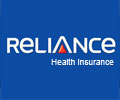Clinical Document Architecture
The Clinical Document Architecture is a generic model for communication or interfacing of Clinical documents. When CDA was launched, the original vision was standardization for communication of clinical notes. But nowadays, CDA user community is having the tendency of using it as a more persistence specification. CDA 2.0 defines the structural organization of fine-grained information within a document.
Different versions of HL7
V2.x Messaging
V2 is also called as Version 2 of HL7 that defines a series of electronic messages to support administrative, financial, logistics and clinical processes. The versions of HL7 have been updated regularly at regular intervals, resulting in versions such as 2.1, 2.2, 2.3, 2.3.1, 2.4, 2.5, 2.5.1 and 2.6. These versions collectively constitute a group that is called as version 2.x. It is backwards compatible which means that version 2.3 can be understood by an application that supports version 2.6. HL7 v2.x uses a textual, non-XML encoding syntax based on delimiters. It allows interoperability between electronic Patient Administration Systems (PAS), Laboratory Information Systems (LIS), Pharmacy, Medical Billing, Diet Management, House-keeping, Electronic Health Records (EHR) and Logistics systems. HL7’s v2.x version messaging standard is supported by all the major healthcare information systems vendor in USA.
HL7 Version 3
This version was introduced with the intention to introduce all sorts of workflow processes involving healthcare industry. V3 standard is based on a formal methodology- HDF and OOPS (Object-oriented programming system) concept. The HL7 organization has been striving to develop version 3.0 of the protocol. Unlike 2.x version, HL7 3.0 version is largely based on a single formal model called the Reference Information Model (RIM). HL7 3.0 is a complete re-definition of the HL7 standards that is being attempted to overcome some of the outstanding issues that remain unsolved with the current standard. Version 3 is being implemented with the view to change not only the content of the messages and fields but also the encoding rules, LLP (low level communication protocols), base data types and the roles of the applications participating in HL7 communications. XML is the medium for HL7 version 3 instead of the simple ASCII text.
The difficulties encountered with HL7 3.0 version areas follows:
- The 3.0 standards have not been clearly defined.
- Very few health-care organizations have migrated to version 3.0 as this version remains incompatible with version 2.X. Creating an interface between version 2.X and version 3.0 is proving to be difficult and expensive.
On account of these obstacles that are being encountered with version HL7 3.0, the standard version remains 2.x for both healthcare service providers and associated vendors.
RIM - ISO/HL7 21731
RIM is also called as Reference Information Model and is an an essential part of the HL7 V3 development methodology. RIM is essential for increasing precision and minimizing implementation costs. It expressed data content in a specified format and provides an explicit representation of the semantic and lexical connections between the information in the fields of HL7 messages.
HL7 Development Framework - ISO/HL7 27931
It is a continuously evolving process that develops specifications for facilitating interoperability between healthcare systems. The HDF is the latest version of the HL7 V3 development methodology. HDF documents not just the messaging but includes even the processes, tools, rules and artifacts that are relevant to development of HL7 standard specifications. Eventually, in this process, HDF will incorporate all specifications pertaining to HL7 standards that includes recent or latest standards that result from analysis of electronic health record architectures and requirements. Codes and vocabularies from a varied sources are included in HL7 specifications. It assures an unambiguous understanding of the code sources and code value domains that are being used.
V3 Messaging
These are series of electronic messages that support all workflow pertaining to healthcare. XML encoding syntax form the foundation stone for HL7 v3 messages.
V3 Clinical Document Architecture - ISO 10781
This architecture is an XML-based markup standard for specifying encoding, semantics and structure of clinical documents for exchange.
HISA (Health Informatics Service Architecture)
HISA is a standard aimed at enabling the development modular open systems to support workflow pertaining to healthcare.
HL7 involvement in HIPAA (Health Insurance Portability and Accountability Act)
It is used for specifying standards for supplemental information that are required for supporting health care insurance and allied e-commerce transactions. It oversees that supplemental information is uniformly implemented. Such HL7 messages can be stand-alone messages or embedded within ANSI_X12 transactions.









